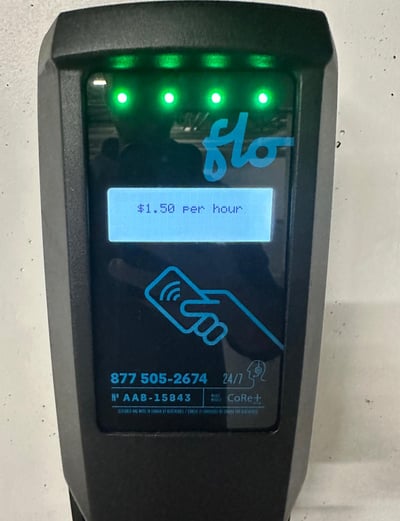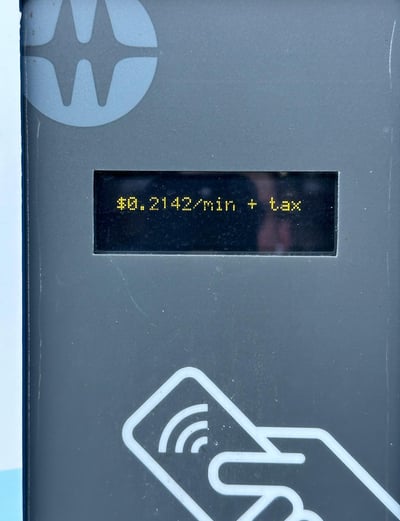
How Long Until I Make My Money Back from EV Chargers?
EV Chargers Payback Period & Return on Investment
BUSINESSESSTRATAS


EV Chargers Payback Period & Return on Investment
How long to make my money back from EV Chargers?
Determining the payback period for a level 2 EV charging project can be challenging. Many aspects can influence the overall project cost including installation complexity, building's power capacity, and charger locations. Estimating the revenue generated from the chargers can be equally as difficult depending on location traffic, EV adoption rates, and electricity costs. That being said, the following information should provide a clearer understanding of these factors and help you gain a better understanding of a potential project.
Introduction
I heard a sad story the other day. Two brothers started an EV charging business with a unique approach. They purchased a property and installed an EV charger alongside a billboard. Their strategy was twofold: the charger would generate income, and advertising on their billboard would provide supplemental revenue. After a few years, the business failed and they ran out of money.
This was a few years ago. I believe they were too early and overestimated the market demand at the time. Things went south from there. I can’t help but wish there had been more online resources available back then to warn about potential pitfalls. Hopefully, the information below will guide you in avoiding a similar situation yourself.
Project Cost
The first step in calculating the payback period is determining the project cost. It's challenging to estimate this online. The most reliable way to determine the project cost is to schedule a "site visit" with an electrician for an estimate. The best electricians will provide this service at no const. In the meantime let’s look at the elements listed below.
If you haven't yet read my other article, "Will my EV Charging Project be Expensive?", I recommend starting there. That article reviews the various factors that could influence the cost of your project. Certain aspects of your location can significantly alter the total project cost, so it's good to be aware of this before learning how to calculate the ROI.
Here's a link to the article: "Will my EV Charging Project be Expensive" (link coming soon).
Average Cost of Install
Knowing the average cost to install an EV charger can serve as a helpful reference point. The total cost primarily depends on whether the chargers are installed inside (in an underground parking area) or outside of the building (in an outdoor parking lot).
Outdoor installations can add complexity and significantly increase the cost.
Based on my experience, these are some approximate average installation costs:
Interior Chargers - Average Installation Cost per Charger = $——K
Exterior Chargers - Average Installation Cost per Charger = $-—-K
(Numbers available upon request - please contact me for details)
Bear in mind that these are rough estimates. The costs mentioned cover the installation only and do not include the actual chargers.
One EV Charger Vs. Two
You might expect the cost to double with two chargers but that's not usually the case. Much of the labour involved, such as coring holes in concrete and installing conduits, is similar whether you're installing one charger or two. It might only cost 25% more to install two chargers instead of one. I'd almost always recommend installing at least two chargers to anticipate future demand.
Cost of a Level 2 EV Charger
The cost of an EV Charger varies greatly based on quality, features, and where it’s made. Typically, popular Level 2 chargers cost between $1500 and $3000 CAD. For budgeting purposes, it's reasonable to anticipate an average cost of $2000 per charger.
There’s more information on charger pricing here: https://strongenergy-ev.com/5-major-costs-of-an-ev-charging-project
Rebates
Rebates will be your best friend when it comes to reducing the payback period. The government strongly encourages the adoption of EV chargers and provides incentives to cover some of the installation costs. Installing an EV charger for employee use could qualify your business for a rebate of up to $2,000 per charger from BC Hydro. So, if you install three chargers, you could potentially receive a rebate cheque up to $6,000.
Right now, there may be some regulations on rebate eligibility for chargers that are intended for customer use but this should be temporary and revised soon.
More information about rebates the BC Hydro website here.
Break Even Point
In my experience, the majority of EV Charging projects typically recover their costs and break-even around the second year in Canada. There are many factors that influence the ROI but this is a present day estimate. The payback period will range drastically depending on location traffic, cost of energy and EV adoption in your area.
This company is from Houston, Texas but they provide a helpful comprehensive ROI estimate of charging stations in their area in an article here.
How Much Money to Bill Users
Now that we know how much the project will cost we need to determine our revenue and profit. In British Columbia, the electricity charge for businesses averages out to around 12 cents per kilowatt from BC Hydro. However, when setting pricing for EV charging you’ll obviously want to apply a healthy markup to make a profit. You’ll want to do some research on the charging competition nearby but I’d aim for a rate of approximately 32 cents per kilowatt.
Kilowatt kW Rate
Additionally, you control how much to bill per kilowatt. This allows you to set the pricing rate to meet your income goals. While the EV charging company takes a small portion of the fee, called revenue sharing, the majority of the profit goes to you. As the chargers gradually pay for themselves, they will become a steady stream of income with each charge. It's a smart investment that benefits the customers and generates financial stability for your business.
Example: Billing by Hour Example: Billing by Minute
Charging Basics & Essentials
The following conversation overlooks some essential charging rules, such as not exceeding 80% of the battery capacity during a power-up. While I've simplified the calculations for better comprehension, it's crucial to understand the basics to grasp the concept. I cover more details, including the differences between kW and kWh, in another post titled: "EV Charging Basics & Essentials" (link coming soon)
Profit Margins
With a 10 kW charger it takes roughly 6 hours to fully power up a Tesla Model 3, which has a 60 kWh capacity battery. Charging the Tesla would amount to $19.20, leaving $12.00 as profit for your business. Please note, different EV’s charge at different speeds so revenue will fluctuate but this can be used as a reference point.
Price of Electricity
Powering up electric vehicles is so inexpensive compared to traditional gas-powered cars that EV owners are less sensitive to minor variations in charging rates. Over time, you'll figure out the optimal market rate that not only attracts drivers but also ensures a healthy profit margin for your business.
Popular Charging Times for Drivers
There are only 24 hours in a day, and most people typically charge their cars when it's light out. This narrows the realistic charging window to roughly 16 hours, usually from 6:00 AM to 10:00 PM. That being said, the most common charging times are early in the morning before work and later at night after work. Occasionally, people also charge at lunchtime, but these sessions are usually shorter.
How Many Hours per Day Will My Chargers Be Used?
The usage of EV chargers will depend on several factors such as location and the number of electric vehicles in your area.
For example, let’s say you install two EV chargers. It's unlikely that both chargers will be in use for a full 18 hours each day, given the current rate of EV adoption. A more realistic expectation would be for each charger to be used for around 6 hours daily, totaling 12 hours collectively.
This may be a generous estimate but there's no doubt that charger usage will increase over time. As more drivers discover your chargers, their usage will increase. However, for the time being, I wouldn’t exceed 12 hours per day when calculating your return on investment.
Charging at Night
Charging at night usually only happens at home where people can sleep. No one wants to sit in a dark parking lot in the middle of the night waiting for their car to charge. It should be noted that energy costs typically decrease in the middle of the night. Even though EV drivers may not like to charge at these times, encouraging them to do so could equal more profits for you.
Billing Techniques: Faster Chargers - Over 10 kW
Here's the key: if you have fast chargers, over 10 kW, you should bill by the kilowatt. This approach is fair because it bills for the amount of electricity the electric vehicle consumes. Additionally, it promotes faster turnover, allowing the next EV to pull up and start charging sooner.
Billing Techniques: Slower Chargers - Under 10 kW
If you have slower chargers, specifically those under 10 kW, billing by time is probably your best option. Some electric vehicles charge at a slower rate than others and consume less electricity. If your chargers are slower, it's important to ensure a steady and reliable revenue stream, especially if cars are charging for long periods of time in your stalls without consuming much electricity.
Faster chargers are always recommended. Although upgrading your electrical system might cost a bit more, it could be worth considering. Calculate the time it will take to reach the break-even point to determine if it's a worthwhile investment.
Energy Cost to Increase
Two significant price increases are likely on the horizon. As people continue to make the transition to electric vehicles and there is a larger demand for electricity I have no doubt the price of electricity will increase. Energy companies are like the new oil barons and I’m sure they’ll want to capitalize on their expanding market power.
Project Price Increase
Another cost that is expected to jump is the cost of EV projects in general. As the demand for chargers increase, the availability of electricians will decrease. Supply and demand will kick in and these factors will inevitably drive up installation costs. It may be wise for businesses to consider installing EV chargers sooner rather than later to avoid these future price hikes.
Conclusion
Investing in an EV charging project can be a profitable venture, with most projects breaking-even around the second year in Canada. However, it's important to consider factors such as installation costs, electricity costs, potential rebates, and the charging habits of EV owners. With careful planning and strategic decision-making, businesses can establish a steady revenue stream from EV chargers while also contributing to a greener future.
As always, I’m here if you need anything.
Adios,
Strong Energy
















